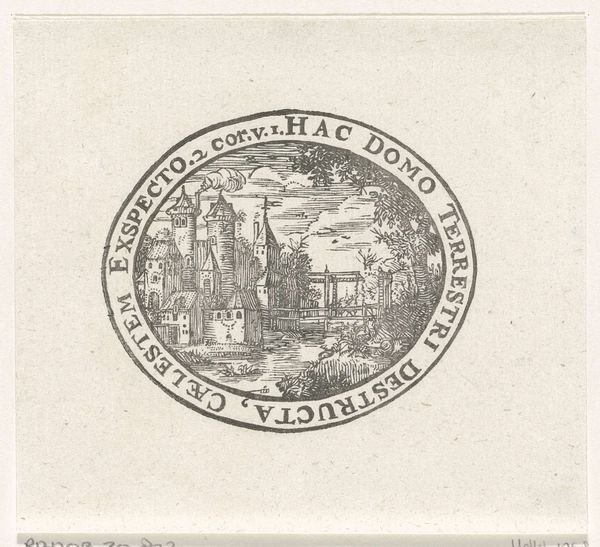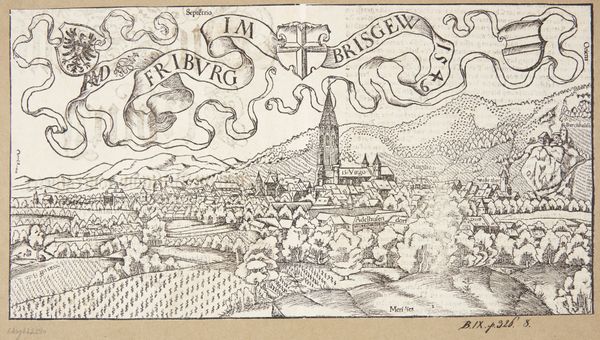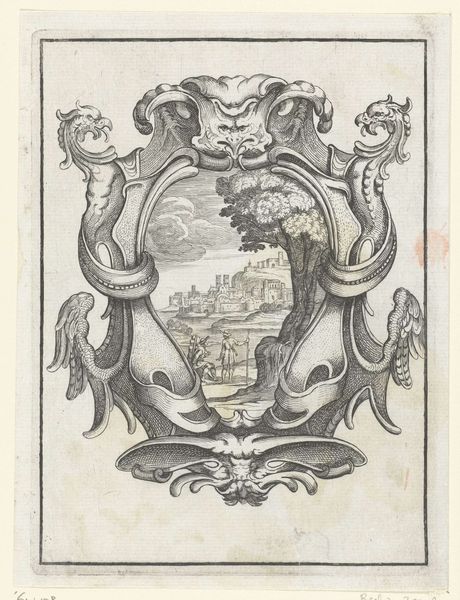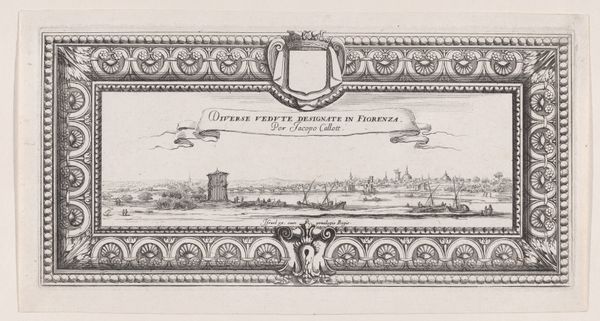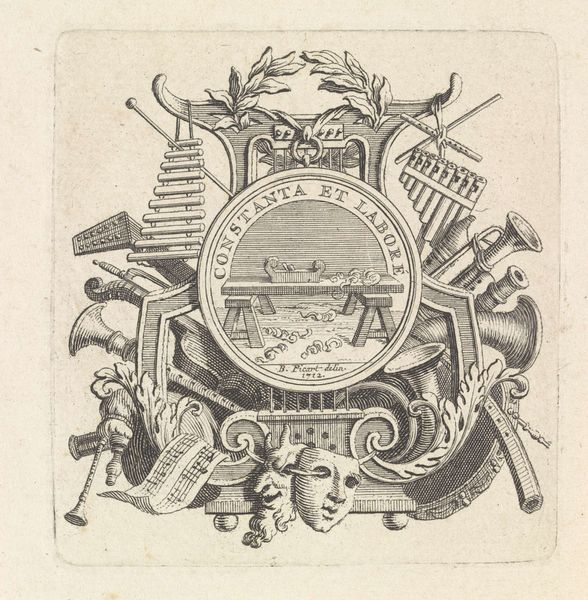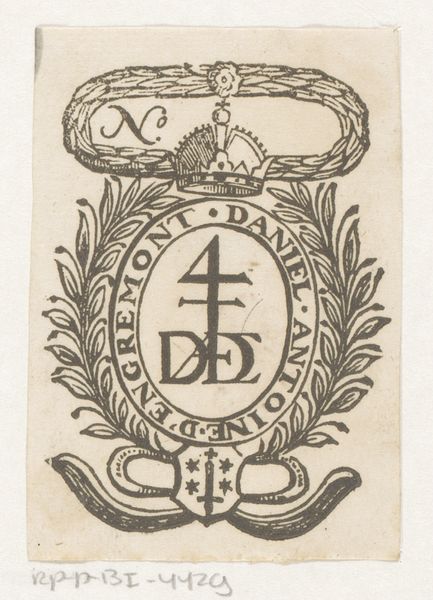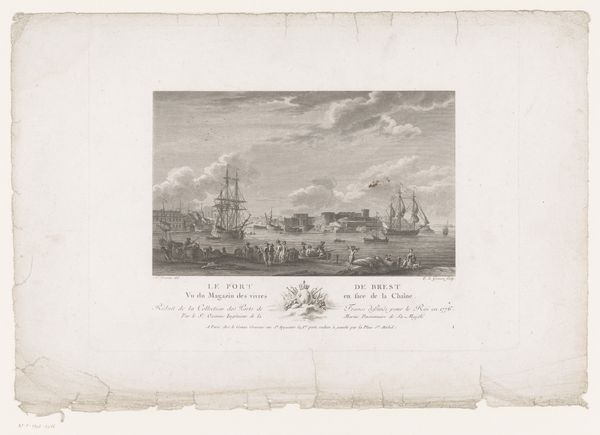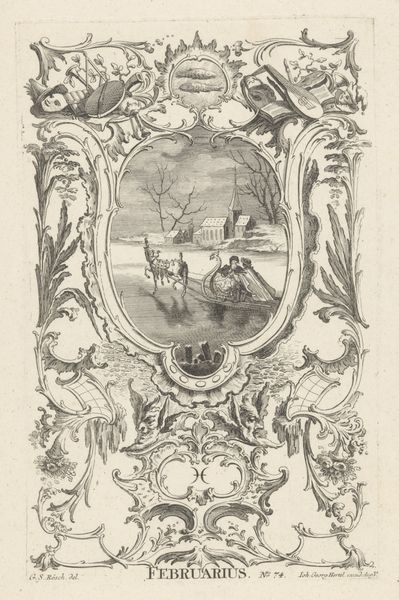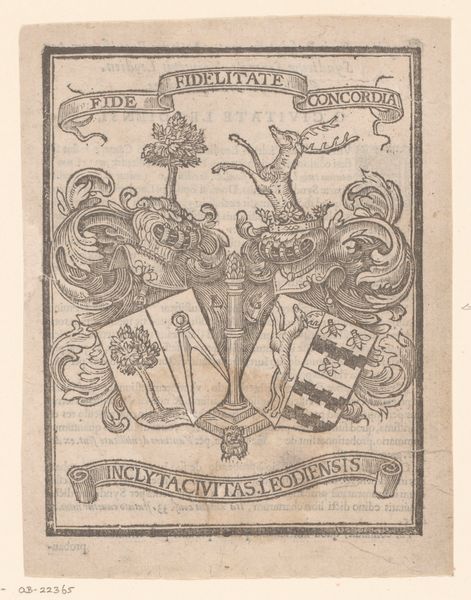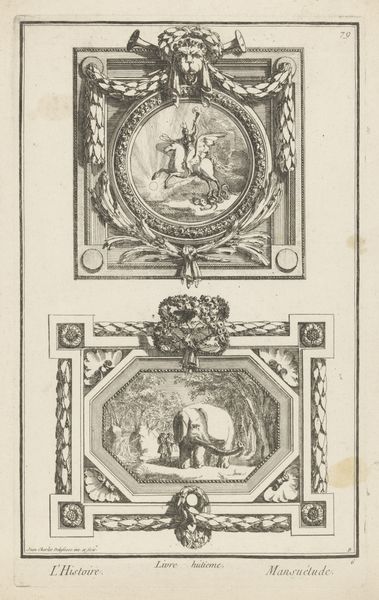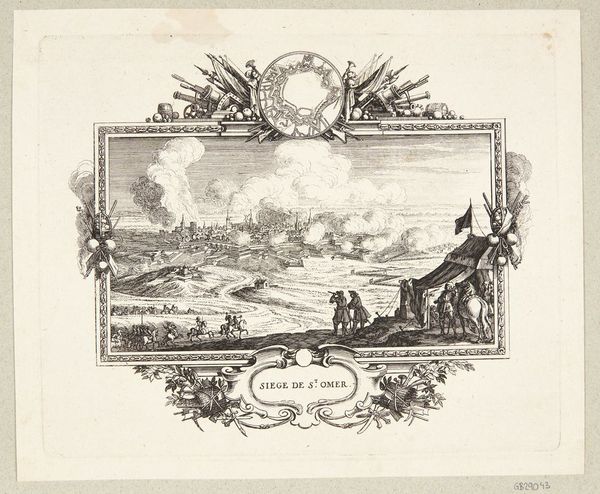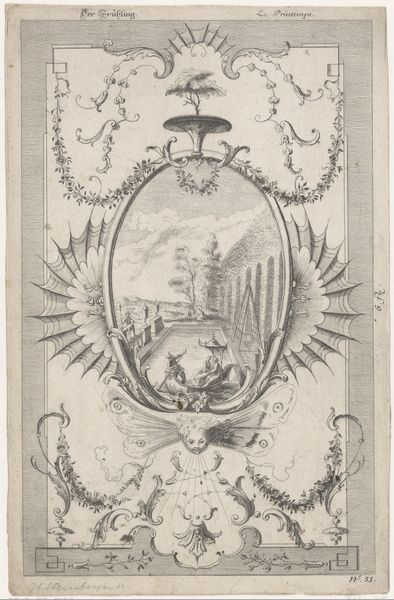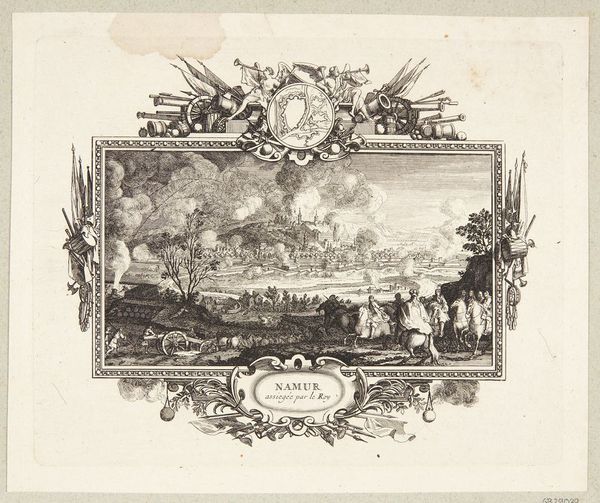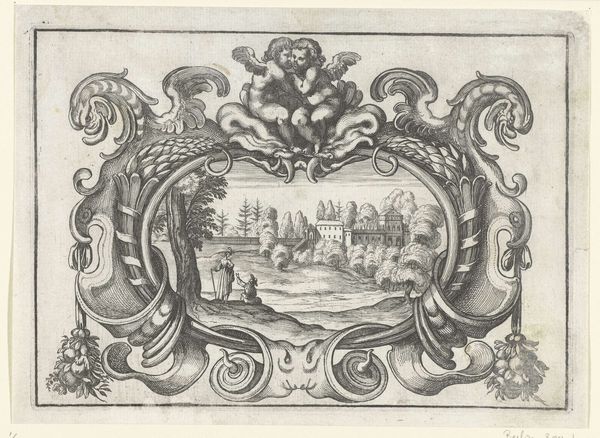
drawing, print, etching, pen
#
drawing
#
pen drawing
#
neoclassicism
#
ship
# print
#
pen sketch
#
etching
#
landscape
#
pen
#
cityscape
Dimensions: 1 1/4 x 3 3/8 in. (3.1 x 8.6 cm)
Copyright: Public Domain
Charles Percier made this pen and gray ink design for a vignette in France during the late 18th or early 19th century. This drawing presents a bustling harbor scene, complete with ships, fortifications, and goods ready for transport. But look closer: the prominent oval cartouche, with its inscription "Virtus Ducit ad Bonam Finem" – or "Virtue Leads to a Good End" – and intertwined initials, suggests this wasn't just a picturesque view. It's likely a personalized emblem, perhaps for a merchant family. In a time of revolution and upheaval, where social mobility was both feared and desired, symbols of virtue and industriousness were crucial. Percier, trained in the neoclassical style, understood how images could convey social aspirations. To understand this fully, we might delve into French trade history, family crests, and the visual language of virtue. Such research reveals how deeply entwined art was with the social and economic currents of its time.
Comments
No comments
Be the first to comment and join the conversation on the ultimate creative platform.
